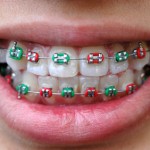
Light systems to cure orthodontic bonding materials to attach orthodontic brackets have been in use for many years. In recent years, alternatives to halogen lights, including light emitting diodes (LEDs) and plasma lights, have been developed. The aims of this review was to compare bracket failure risks and times taken to place attachments with 3 light curing systems (halogen, LED, and plasma) during bonding of orthodontic brackets
A wide range of databases were searched; Medline, Embase, Cochrane Oral Health Group’s Trials Register and Cochrane Central Register of Controlled Trials (CENTRAL), ClinicalTrials.gov (www.clinicaltrials.gov) ,the National Research Register (www.controlled-trials.com) and Pro-Quest Dissertation Abstracts and Thesis. No language restrictions were applied.
Study selection, assessment of risk of bias, and extraction of data were performed independently and in duplicate by 2 investigators. Randomised and controlled clinical trials, with split-mouth designs with follow-up of more than 6 months were included. The main outcome was initial bond failure with placement time being a secondary outcome.
- Ten studies (all split-mouth studies) met the inclusion criteria. Eight studies were included in a meta- analysis, five compared plasma arc and halogen lights the other three focused on LEDs and conventional light curing systems. One study was judged to be at low risk of bias, and seven studies had unclear risks of bias.
- Comparing the bond failure risk with halogen lights and plasma arc lights, 1851 brackets were included in both groups. There was no statistical difference in bond failure risk between the groups (OR, 0.92; 95% CI, 0.68-1.23; prediction intervals, 0.54, 1.56).
- No statistical difference in bond failure risk was seen in the meta-analysis comparing halogen lights and LEDs (OR, 0.96; 95% CI, 0.64-1.44; prediction intervals, 0.07, 13.32).
- The pooled estimates from both comparisons were OR, 0.93; 95% CI, 0.74-1.17; and prediction intervals, 0.69, 1.17.
The authors concluded
There was no evidence to suggest any significant differences in the risks of bond failure with conventional halogen, plasma arc, or LED curing light systems.
Links
Fleming PS, Eliades T, Katsaros C, Pandis N. Curing lights for orthodontic bonding: a systematic review and meta-analysis. Am J Orthod Dentofacial Orthop. 2013 Apr;143(4 Suppl):S92-103. doi: 10.1016/j.ajodo.2012.07.018. Review. PubMed PMID: 23540642

is there any relation betweeen the bonding of orthodontic bracket and smoking?
I am not aware of any evidence in relation to this-. A quick seach of Medline only came up with one small in vitro study
Almeida e Silva JS, de Araujo EM Jr, Araujo E. Cigarette smoke affects bondingto dentin. Gen Dent. 2010 Jul-Aug;58(4):326-30. PubMed PMID: 20591778. http://www.ncbi.nlm.nih.gov/pubmed/20591778 / which concluded ‘that contamination by cigarette smoke decreases the bond strength between dentin and composite resin.’